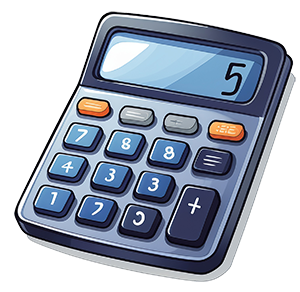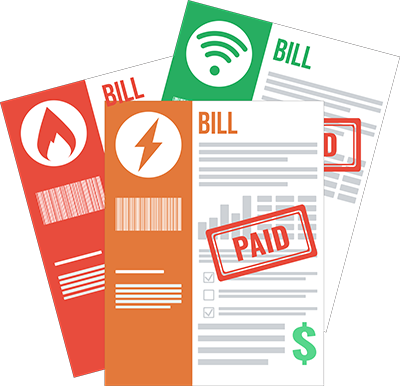What is the Simplified Home Office Deduction?
August, 11 2025 by Kathryn Brahaney, EA
If you or your spouse uses a portion of your home for business or self-employment purposes, you may qualify for a home office deduction. This deduction can save money on taxes, but like all tax deductions, there are rules and options, and understanding them can help you claim the best deduction for which you qualify. One of the biggest options is to choose whether you want to claim the regular method home office deduction versus the simplified method. But first, be sure to confirm you qualify to claim a home office deduction.
What is the home office deduction?
The home office deduction allows people who have a home-based business or self-employment income to deduct some of the costs of their home-related expenses from their business’s taxable income. For federal income tax purposes, please note that because of the changes to tax laws in 2018, you must conduct work as a business or self-employment work (gig work, freelance work, work done as an independent contractor) for this deduction. Sorry, Form W-2 employees and W-2 employees who telework are not currently eligible for this deduction on their federal individual income tax return. The home office deduction remains for those who are self-employed, but cannot be claimed by W2 employees in 2025. Some states, such as California, have not conformed to limiting the home office deduction to those who are self-employed. In states that have not conformed, certain employees may qualify to claim a home office deduction on their personal state income tax return.
What are the two rules you must meet?
There are two rules you must meet to claim the home office deduction.
- Regular and Exclusive Business Use: The space must be used for business and nothing else. That means not watching TV, paying personal bills, sharing non-business meals, or hosting friends or family in your official business space. The space must only be used for business purposes.
- Principal Place of Business: Under most circumstances, the home office must be your main place of work. That doesn’t mean you can’t go out for meetings or meet a client at a café once in a while, but your home office should be where you spend most of your working hours. There is an exception to the principal place of business rule. Those who mainly conduct their business outside the home but use a home office to complete their business’s administrative or management activities might be eligible to claim a home office deduction. This exception is limited, so the rules should be reviewed carefully.
How is the home office deduction calculated?
Taxpayers have two ways or methods to calculate their home office deduction. Each method has its pros and cons.

- The Simplified Method
This is the easier option. You will measure the square footage of your home office (up to 300 square feet) and multiply it by $5 per square foot. For example, if your office is 100 square feet, then:
100 square feet X $5 = $500 deduction.
What if your home office is 500 square feet? Because the simplified method limits the home office square footage deduction to up to 300 square feet, your home office deduction would be $1,500, calculated as follows:
300 square feet x $5 = $1,500 deduction.
Pros:- Super easy to calculate
- No need to track every tiny expense
- IRS paperwork and record-keeping are simpler
Cons:- The maximum deduction is $1,500 (300 square feet x $5), even if your actual expenses are higher.
- You don’t get to write off costs that are directly associated with your home office, such as painting or repairs made to your office space.
- Using the simplified method cannot reduce the business’s net profit below $0. In other words, when using the simplified method, the deduction cannot generate a net loss on your business. Additionally, any of the unused deduction cannot be carried forward to a future year. Here is an example.
- In 2025, Millie has a net profit of $700 on her consulting business before determining her home office deduction. Her home office is 300 square feet, so her simplified deduction is $1,500 (300 x $5 = $1,500). However, because Millie’s net profit before the home office deduction is less than $1,500, she can only report a home office deduction of $700, reducing her net profit or loss to $0. The remaining $800 of her 2025 home office deduction cannot be carried forward and used in a future tax year. The excess deduction is lost.
- In 2025, Millie has a net profit of $700 on her consulting business before determining her home office deduction. Her home office is 300 square feet, so her simplified deduction is $1,500 (300 x $5 = $1,500). However, because Millie’s net profit before the home office deduction is less than $1,500, she can only report a home office deduction of $700, reducing her net profit or loss to $0. The remaining $800 of her 2025 home office deduction cannot be carried forward and used in a future tax year. The excess deduction is lost.
 The Regular Method
The Regular Method
This is a more detailed method. First, you add up all your eligible expenses that are related to your entire home, such as mortgage interest, property taxes, rent, utilities, home insurance, certain repairs, etc. These are known as your indirect expenses, as they apply to the entire home and not just the home office. Next, you will take this total and apply the percentage of your home office in relation to your entire home. For example, if the total square footage of your home is 1,500 and your home office is 375 square feet, your office is equal to 25% of your home’s total square footage (375/1500 = .25). If your total indirect eligible expenses are $10,000, then the deductible amount is calculated as follows:
.25 x $10,000 = $2,500 deduction.
Any expenses directly related to the home office may be deducted in full. An example of a directly related expense is the amount paid to repaint the office space. The total of your direct and allowable indirect expenses becomes the total of your allowable home office expenses.
Pros:- May result in a bigger deduction if your costs are high.
- You can also deduct the cost of improvements specific to your office.
- Any excess home office deduction amount you were not able to claim because of the net income limitation may be carried forward to future years when using the regular method.
Cons:- The calculation is more complicated.
- Requires you to keep detailed records of all your expenses.
- May require depreciation calculations if you own your home, which can affect future tax returns. Furthermore, you may have to recapture the depreciation that was allowed in the year you sell the home.
Which method is best?
It depends on your situation. If you have a small office and don’t want to deal with more paperwork, the simplified method is a great choice. However, if your home office takes up a significant portion of your home or your housing costs are high, it may make more sense to use the actual expense method, if you are willing to do the math and keep proper records.
What records should you keep?
If you are using the simplified method, keep the following:
- Measurements of your home office: How big is it? Is it a clearly separated space?
- Photos of the home office: The photos may be helpful in the event your home office deduction is ever audited, as they may help to verify that the space was used exclusively for your business activity.
- Work schedules or logs: These will help verify that the office was used primarily for work. Also, you may want to keep a work calendar to reference, if needed.
For those using the regular method, keep the records listed above, plus the following additional records:
- Utility bills, rent, or mortgage statements: These records will verify the amounts you claimed for these expenses.
- Proof of payment for housing costs: Examples of proof of payment may include receipts, remittance slips, and bank or credit card statements (or copies of cancelled checks). These records are important as they show you paid the expenses.
Final thoughts
The home office deduction can be a great way to save money at tax time, but it only works if you’re eligible and if the space meets IRS guidelines for the deduction. Choosing between the simplified or regular method may depend on how much effort you’re willing to put into record keeping and how much you spend on your home office.
Whether you are already running a successful small business, considering starting a side gig based in your home, or just curious about this deduction, understanding the home office deduction is a great step towards maximizing tax breaks for those who have self-employment income.





